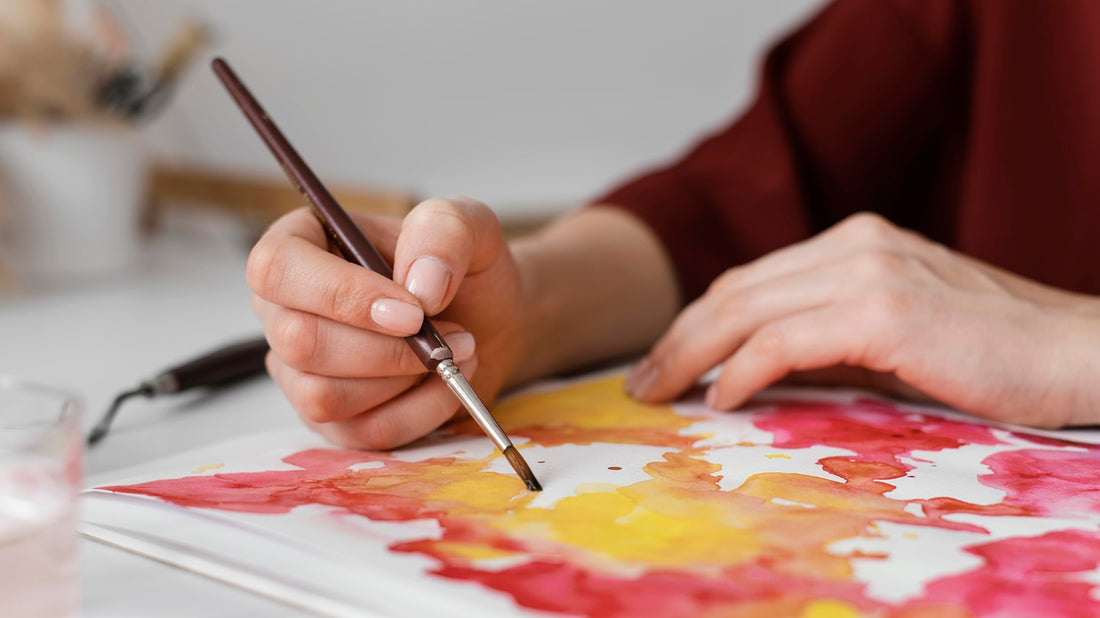
How to Hide Numbers in Paint by Numbers When Painting
Share
Paint by numbers kits are a fantastic way for beginners and seasoned artists alike to create stunning works of art with minimal guesswork. However, one challenge some new artists face is how to effectively hide the visible numbers and outlines printed on the canvas. These numbers and outlines can detract from the overall look of the painting if they’re not fully covered. The following techniques will ensure your finished painting looks seamless and professional.
1. Choosing the Right Paint Consistency
One of the most critical factors in hiding numbers and lines on your canvas is the consistency of the paint. If the paint is too thin or watery, it may not provide the necessary coverage.
- Use Thicker Paint: Our paint by numbers kits come with acrylic paints, which are great for this purpose because they dry quickly and offer solid coverage. However, on occasion, a paint pod might be thinner than usual. If this is the case, allow the paint pod to sit open for a short period of time to thicken slightly.
- Avoid Diluting the Paint: Many painters are tempted to add water to paint that is too thick. However, diluted paint will be more transparent and may not effectively cover the printed numbers. If it’s necessary to thin the paint, a small drop on the tip of a brush should be sufficient.
2. Apply Multiple Layers of Paint
If a single coat of paint isn’t enough to cover the numbers, applying an additional layer should do the trick. Lighter colors like yellows and pastels don't always provide full coverage.
- Build Up Layers: Wait for the first layer of paint to dry completely before adding the second coat. Acrylic paint dries relatively quickly, usually within 15-20 minutes, depending on the thickness of the paint. Once dry, you can add another layer over the number until it’s no longer visible.
- Allow Each Layer to Dry: If you try to apply a second layer before the first is fully dry, the colors can mix, and the coverage may become uneven. Take your time and let each layer dry properly before moving on to the next.
3. Mix Paint for Greater Opacity
If you find that some colors in your kit are too transparent to cover the numbers, you can mix them with other similar paints to increase their opacity. This technique is particularly useful when you're working with lighter shades that don't offer enough coverage on their own.
- Add a Touch of White or Opaque Paint: By mixing a small amount of white paint or a more opaque shade of the same color into the paint, you can increase the thickness and coverage of the color. Just be careful not to drastically change the color, as mixing in too much white will lighten the hue.
- Test Before Applying: Always test your color mixture on a scrap piece of paper or canvas to make sure the new shade still matches the intended color. This way, you can adjust the mixture without impacting your overall artwork.
4. Use Smaller Brushes for Precision
You can effectively cover the numbers and outlines by using smaller, more precise brushes. The brushes that come with the paint by numbers kits are typically medium-sized, which may not provide the control you need for intricate areas.
- Choose the Right Brush: IT’s always good to invest in a set of fine-tipped brushes, which allow for more control and better coverage of detailed areas, including the small printed numbers. By applying the paint with a more detailed brush, you can ensure that the numbers are thoroughly covered without accidentally going outside the lines.
- Work in Layers with Small Strokes: Use small, controlled strokes to gradually build up the opacity of the paint. This technique helps you avoid overloading the brush with paint, which can result in uneven application or streaks.
5. Work in Natural Light
Painting in good lighting is essential! Painting in natural light will help you see areas where the numbers are peeking through and need more coverage.
- Good Lighting Conditions: If natural light isn’t available, make sure to use bright, neutral lighting. Daylight bulbs or LED lamps that mimic daylight are great for this. Dim lighting can make it very difficult to spot areas where numbers are still visible.
6. Touch Up After the Painting is Complete
Once you’ve completed the painting, it’s always a good idea to go back and look for any visible numbers or outlines that may still be visible. Even after multiple layers, some areas may need a final touch-up.
The most important thing to remember when hiding numbers in a paint by numbers project is to be patient. Full coverage can take time, especially with lighter colors. Rushing through the process can result in a less-than-smooth finish or cause the colors to blend in undesirable ways.
Conclusion
So now you’ve learned how to create a polished and professional-looking piece of art. By using techniques like layering, base coats, mixing paint for greater opacity, and working with smaller brushes, you can ensure that your artwork looks seamless! With patience and attention to detail, you'll be able to turn your painting into a beautiful work of art that no one would guess started with printed outlines and numbers.
Happy painting, friends!
